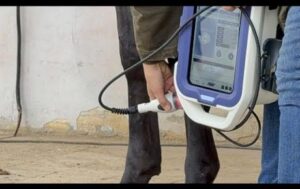Which Laser is Right for You?
It’s a well known fact that every surgical laser is different. But if you’ve never experienced the varieties out there, you can’t begin to compare them. In this blog, we’ll talk about the key differences between surgical lasers with articulated arms and surgical lasers with wave guides and how to choose the right product for you.
Power:
Articulated Arm:
There is no loss of power with an articulated arm as the beam integrity does not diminish through a tube.
Waveguide:
Laser requires verification of distal calibration daily (meaning there is a loss of power every time you use the machine).
Hand Piece:
Articulated Arm:
- 360 degree hand piece rotation
- The titanium articulated arm is lightweight
- No need to re-adjust your grip on the hand piece as it moves with you (if you drop the hand piece it will stay where you left it, no snapping back).
- Autoclavable hand pieces (no costly tips or waveguides to replace).
Waveguide:
- Pen-like hand piece for a scalpel like feel
- Requires you to re-hook the hand piece every time you pause (causing you to take your eyes of the animal or risk breaking the sterile field).
- Fiber hook hand piece has tips that need to be replaced frequently or you risk loss of energy (averagely a $5-$25 cost per tip).
Precision:
Articulated Arm:
Offers the Aiming Beam (allowing you to visualize the energy before firing so you can be sure of your accuracy before cutting).
Waveguide:
Currently does not offer an aiming beam.
Calibration:
Articulated Arm:
Automatic calibration – there are no delays with daily calibration.
Waveguide:
Requires daily (or more) calibration/s.
Temperature Control:
Articulated Arm:
Closed loop liquid cooling and metal canisters (eliminates any chance of overheating).
Waveguide:
Forced air cooling with RF, or radio frequency, metal canisters (runs the risk of overheating as it’s not as effective as liquid cooling).
Standby Mode:
Articulated Arm:
20 Minute standby mode (no need to worry about the laser going into standby mode before surgery is complete).
Waveguide:
Short active time frame (5 minute standby mode) – laser may go into standby mode if there is a pause in surgery.
Warranty / Repairs:
Articulated Arm:
- 5 Year Manufacturers Warranty
- On site maintenance and repairs.
Waveguide:
- 5 Year Manufacturers Warranty
- Requires shipping back to manufacturer for repairs or maintenance.
Evaluation of an articulated arm unit, from former waveguide user Dr. Peter Eeg:
The majority of my surgical laser experience has been with hollow waveguide technology. So when I considered the addition of a “second” CO2 laser to my practice, I gave careful consideration to the platforms currently available in the market. Since a growing number of veterinary CO2 laser users have been purchasing articulated arm delivery systems, coupled with a revolutionary new scanning delivery system that allows for beam utilization in a full scanning, circular ring scan or 0.25mm focused beam in superpulse or non-superpulse mode that does not require change out of equipment, made this laser platform my natural next choice for my practice.
I can say without hesitation that I am very impressed by the consistency and repeatability of the laser beam geometry and power output. I have taken the liberty of comparing expected watt settings entered into the computer screen with actual watts output generated at the target tissue point using a power meter. Consistency has been very close to 100%. This tells me that the watts a laser user is requesting from the articulated arm platform will be the watts delivered to the target tissue.
I was also very surprised and pleased with the advantage that not having to use a tip as presented during a number of surgical procedures. In my over ten years of intensive use of hollow waveguide tip systems, I have found that the tips would routinely become partially obstructed by plume debris spraying back from the vaporization of targeted tissue. This would require me to stop and clean the tip before continuing on with the incision, transection, and resection of dissection of tissues being surgically manipulated with the CO2 laser beam. While not a great amount of time was lost during these cleaning periods, some frustration always was present on my part. The Cutting Edge 30 watt CO2 focusing hand piece as eliminated this frustration, surgical time loss and allowed for greater consistency and speed during target tissue handling.
I have found that I am impressed by the preciseness and accuracy the diode aiming beam that the articulated arm unit provides during both large scale and delicate procedures. When combining the individual single pulse and pulse wave settings with the effectiveness of the pin point accuracy of the diode aiming beam, I have seen tremendous success in vaporizing, ablating and resecting very precise delicate areas of target tissue. Numerous positive comments from the surgical techs and specialty surgeons that work with me included the ability to know where the beam is being directed as a consequence of being able to see the aiming beam.
Earlier in this I indicated that the articulated arm unit was purchase to be the “second” CO2 laser in my practice. The truth has become that this laser is now the primary CO2 laser in use at my practice.
– Peter H. Eeg, DVM, CVLF, DALE




